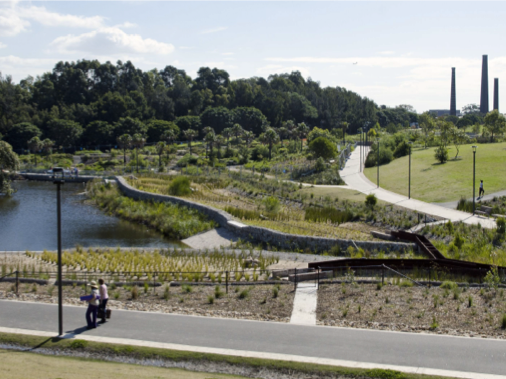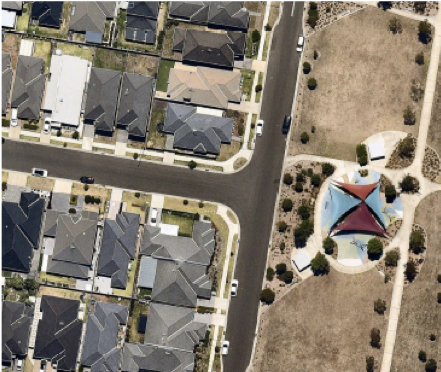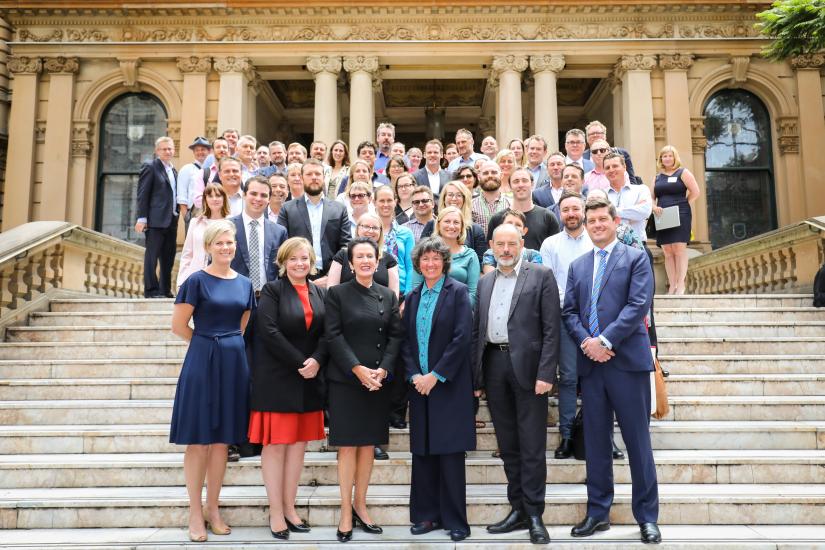Unfit for the future - the water sensitivity of Sydney
The challenge of enhancing livability within the context of rapid population growth, aging infrastructure and climate change is immense.
While there are strategies, plans and icon developments borne from leadership and collaboration, there is no overarching coordination & regulatory commitment to embed widespread water wise investment.
ISF Distinguished Professor Cynthia Mitchell recently assumed the role of Master of Ceremonies at the Water Sensitive Sydney Summit, held on 22 February 2018 at Sydney Town Hall. Hosted by City of Sydney, the Summit brought together some of the most prominent names across the water and development industry in Sydney. The Summit initiated a conversation critical for delivering a more sustainable, resilient and prosperous water future across the Sydney region.
The need for change to our water future was demonstrated by the caliber and diversity of presenters, who included Lord Mayor Clover Moore, Professor Rob Skinner, Rod Simpson, Beck Dawson, Richard Denniss, Eamon Waterford, Kurt Dahl and Lisa Currie.
After a series of engaging presentations on current issues, barriers and opportunities for the future, Cynthia lead a conversation between participants and the expert panel discussing the challenges and opportunities for embedding water sensitive outcomes. From the conversation that followed it was clear that while the issue of water sensitivity is complex to the point where no one party can solve it alone, there was also “furious agreement across the diversity in the room about the direction that we need to head”, according to Prof. Mitchell.

|

|
Sydney has great examples of innovative water sensitive design for example City of Sydney’s Sydney Park, but more commonly, urban development exacerbates heat and is unfit for the future.
The diverse nature of participants attending the summit unequivocally agreed that the current regulatory, pricing and institutional frameworks do not support water sensitive cities. In fact, current water and land development patterns in Sydney were described as ‘unfit for the future’, resulting in the delivering cities that are not green, not cool and not all that liveable.
The vison outlined in the Greater Sydney Regional plan of a metropolis of three cities is heavily branded around highly visible water connecting the landscapes: the Eastern Harbour City, the Central River City and the Western Parkland City.
It was recognized that Sydney is at a critical juncture of policy and regulatory reform. The changes that are made now will either embed water sensitive practices within the city, or exclude water sensitive practices across the city. It is vital to develop a policy framework that embeds leading practices and provides rigor and consistency across all water practices in a timely fashion.
Cynthia noted the very real challenge of ‘how to design regulatory processes which look after the minimum, but don't stifle innovation’. Coming out of the Summit City of Sydney, in conjunction with ISF, are in the process of preparing a discussion paper will be provided to key audiences around the city. This paper will go to Infrastructure New South Wales as an input not only to the regulatory pricing review, but also to the broader conversations about planning for South Creek that are currently underway.
City of Sydney has initiated the conversation. We must keep the conversation going and work collaboratively to design a framework that will successfully deliver water sensitive outcomes now and for the future.

Attendees of the Water Sensitive Sydney Summit, including Prof Cynthia Mitchell and City of Sydney Lord Mayor Clover Moore.
